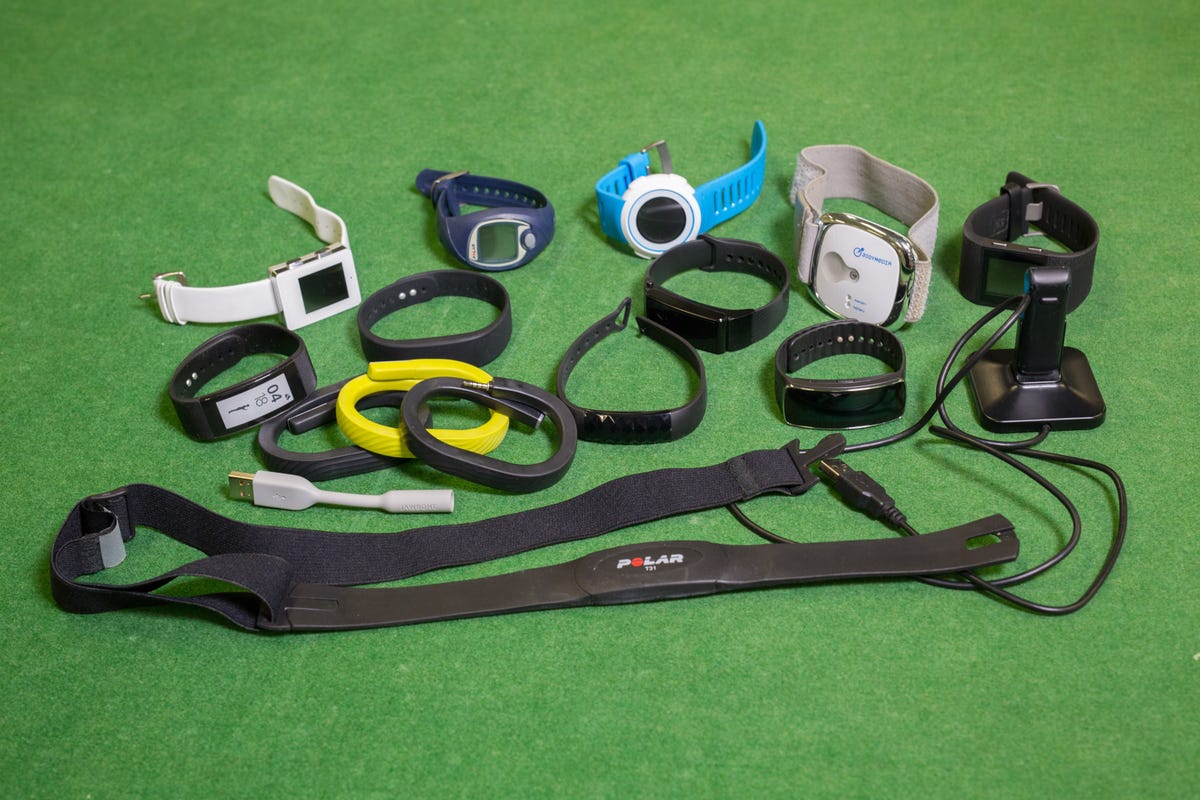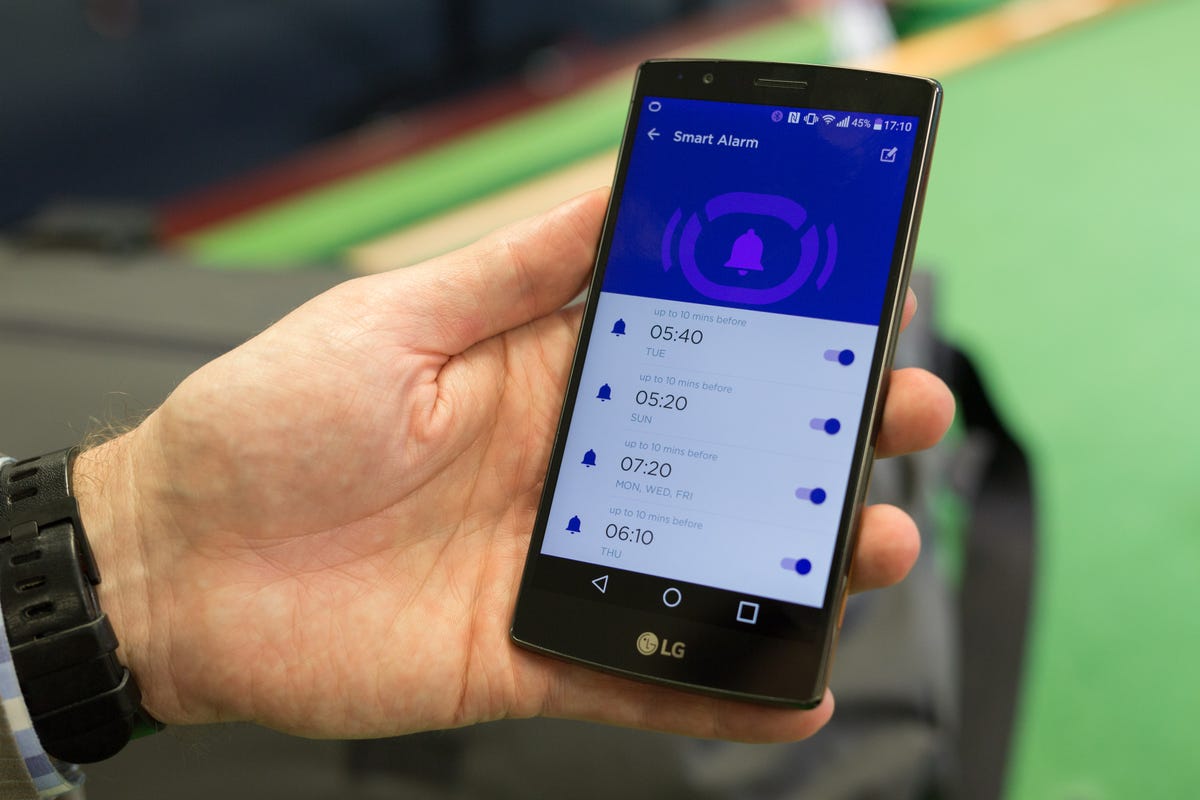

Now playing:
Watch this:
Wearable tech, polyphasic sleeping and me
0:30
Editors’ Note: Originally published August 3, 2015, this piece has been updated throughout.
Even more than my phone, my fitness band is a constant companion — at the gym, in the shower, and most importantly, when I sleep. It was my fitness band that inspired me to do one of the craziest things I’d ever tried: hacking my sleep cycle. I split my night-time snoozing into two blocks and wedged a 3:00am gym workout in between (it’s called polyphasic sleeping, by the way). Why? To sleep more. It sounds mad and it wasn’t pretty. In fact, the first week was downright painful. But it has made a huge impact on the quality of my sleep, and without wearable tech like my Jawbone Up24 it would have been nearly impossible.
To understand why I might turn to something as drastic as cleaving my sleep schedule in half, there are two things you should know. The first is that I’m a fiend for wearables. The second is that I’ve been plagued by poor sleep for longer than I can remember.
Sleep is more important than just feeling refreshed in the morning. Doctors and scientists now link the lack of sleep to a pantheon of maladies, from diabetes to depression. I’ve never been a great sleeper. I go through waves of mild insomnia fairly regularly and never seemed to get that mystical eight hours that convention says we need.
So when I learned that certain wearables could help track my sleep cycle, I decided to try the hair-brained experiment on myself. If I used my fitness band to wake me up after X hours, work out for an hour in the middle of the night, and sleep for another Y hours, would I really clock more quality hours of promised restful, health-giving Z’s? If I could use my technological love to help fix a physical need, it was worth a shot.
For the love of wearables
Did the experiment work? Yes, and I’ll get to the results and exactly how I used my fitness band. But first, we need to take a step back and start at the beginning: I’m a wearable tech addict. Ever since I tried my first Bluetooth step counter, a belt clip that owed everything it could do to the pedometers of yore, I’ve been hooked.
These days I pretty much depend on my Android Wear smartwatch, but I’ve never got away from having a dedicated fitness wearable on the other wrist. While I know that, technically, my watch can do everything that my Jawbone Up3 can do, when I’m working out and sleeping, the Jawbone is considerably more comfortable to wear. I mean, who wears a watch to bed?

Click here for more stories in CNET’s Most Exciting Tech series.
I’ve owned a Jawbone band in one form or another since March 2013 when the very first Up launched in Australia, a few months after it did in the rest of the world. (We always get to wait a little longer for the good stuff to make it ‘down under’.)
Even before I forayed into my wacky half-and-half sleep schedule, the Jawbone Up’s sleep tracker function, well, let’s say it offered calibrated proof that I was a poor sleeper, averaging under 6 hours a night. Digital evidence that, yes! I had been awake at 4:35 a.m. for 32 minutes! It was a real thing that had occurred! I had taken over 2 hours to fall asleep! This was a thing that was honestly happening to me!
Each morning I would wake and study my sleep data, sighing over the poor numbers and worrying myself into a bad mood, as I got anxious about whether I’d had enough sleep to be able to cope with the working day. The Jawbone was helping me realize I wasn’t resting how I wanted, but I didn’t know what I could really do about it.
It was the Jawbone that gave me the idea to try sleephacking, since it has two key features. First, as a fitness tracker that also includes sleep tracking, the Jawbone uses sensors to detect when you’re actually sleeping and when you’re awake. Some smart logic also helps it calculate when you’re phasing out of the deep sleep REM cycle into lighter slumber, and can slowly, gently wake you by buzzing your wrist around the time that you want to wake up.
That’s a nice bonus even if you’re into monophasic sleeping, that is, catching a continuous 7 or 8 hours, but for my experiment in polyphasic sleeping, being woken in stages versus to a blaring, rude alarm, made it possible for me to get out of bed at such ungodly hours. Otherwise, I would have probably smashed off the alarm and given up on the project entirely.
My most-loved tech: Fitness gadgets (pictures)






A quantified self
So it’s July 2014 and there’s me, brand new Jawbone Up24 encircling my wrist, getting ready to start my polyphasic sleep experiment. At its most extreme, splitting your sleep up into multiple chunks rather than a single block can be the so-called “Superman sleep” that has you eschewing even a vaguely traditional schedule in order to nap for just 20 minutes every 4 hours. It sounds badass — more like something Batman rather than Superman would do — but after watching a friend attempt it (and be conquered by it) I was quite comfortable trying for something a little more pedestrian.
As you are now aware, I decided to aim for two blocks of nap-time interspersed with a gym session. The anecdotal-based theory says that, before gas lighting and electricity became mainstays of the modern home, humans used to naturally split our sleep, grabbing a quick 4 hours before getting up. That up time might last up to 2 hours of reading, relaxing or even visiting neighbours, before heading back to bed for another block of sleep.
I was fascinated by the idea and quickly embraced the concept. I decided I would sleep from 10 p.m. until 3 a.m., get up, hit my local 24-hour gym for a quick session and then be back in bed from 4 a.m. to 7:30 a.m. I was going to do this for three months.
My strategy hinged on a few things. First, the Jawbone Up24’s silent alarm I mentioned earlier. This feature has the band vibrating to wake you, but with an essential twist: you specify the time you want to wake up, then how many minutes ahead of that you’re willing to be woken. The Jawbone then wakes you during that time period when your sleep is at its shallowest, avoiding the jarring shock of an alarm kicking you out of deep sleep.
Second, I needed to be able to track how much overall sleep I was getting. Obviously.

 Enlarge Image
Enlarge ImageDave Cheng/CNET
Third, much as I was all about sleep, I still wanted that sweet, sweet step count. For my nocturnal gym session, I decided on a hill march: basically I cranked a treadmill to 15 percent incline and walked at a rather brisk pace for 30 minutes. (I did try a weights session one night and it felt weirdly dangerous — as if I was working out while drunk — so that never happened again.)
I added some Bluetooth sports headphones into the mix, just so I could watch something on my tablet while marching. I started using a pair that would also monitor my heart rate but they had problems pairing with the Samsung Galaxy Tab S, dropping out so regularly as to make a show unwatchable. I swapped them for something more basic and all was well.

 Enlarge Image
Enlarge ImageDave Cheng/CNET
Gradual results
So, what happened? Well, I started this in the depths of Australian winter, dragging myself out of bed confused and blinking into the cold air, to watch a 30-minute TV show while climbing a fake hill and asking myself “Why?!” For the first week or so I would get back into bed around 4 a.m. and lie there, not fully awake, but nowhere near sleep, until about 6 a.m., when I’d manage a fitful extra hour of sleep that made me feel even more exhausted. The Jawbone told the sad story: I was getting less sleep than ever and it was awful.
Then, gradually, things changed. My alarm went off at 3 a.m. and I was awake — alert even. I’d slide back into bed and drift off in minutes. I woke up at 7:30 a.m. feeling fresh and fine.
My step count was through the roof: I changed my goal from 10,000 to 12,000 and was still smashing it every day.
I caught up on all the shows I’d promised to watch or rewatch. (Seriously, how did “Terriers” not get a second season? Why did people keep telling me to check out “Falling Skies”? Did they secretly hate me?)
And my sleep? Well my sleep crept up, slowly but surely. By the end of my 12-week experiment with split sleep, I had actually added nearly a full hour to my sleep total, mostly by just getting to bed earlier and then sleeping more solidly in my two blocks..
Could I have kept it going? Maybe. We were moving into party season and there’s not much joy to be had from rising at 3 a.m. when you’ve only climbed into bed, slightly worse for wear, no more than 3 hours earlier.
But more importantly, I didn’t feel like I needed to. Even now, a year later, I’m still averaging 7 hours of straight sleep a night, which is a solid improvement for me. My split-sleep experiment was, by my reckoning, a wild success. And now? Well it’s a Jawbone Up3 that’s on my wrist these days, but I still compulsively study my sleep patterns each morning.
The big difference is that these days, I’m a little happier with the data I find.



